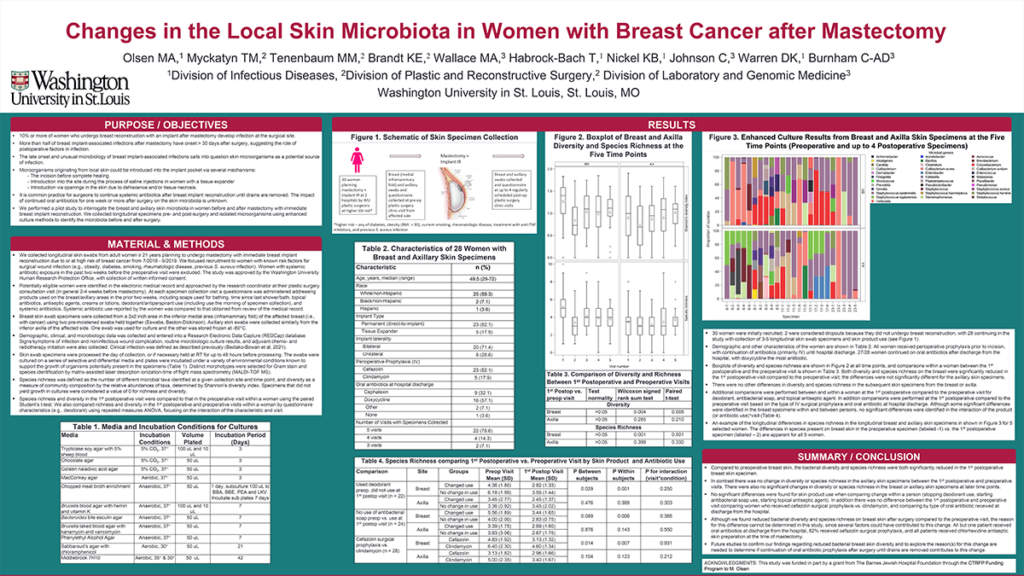Introduction: The late onset and unusual microbiology of some breast-implant associated infections suggests local skin microbiota as a possible source of infecting bacteria.
Methods: Breast and axillary skin swabs, antibiotics, and skin product use were collected from women planning to undergo mastectomy with immediate implant reconstruction during the preoperative and up to four postoperative clinic visits. Skin specimens were cultured using an extensive array of growth media, and organisms were identified by MALDI-TOF mass spectrometry. Bacterial diversity was determined using Shannon’s diversity index based on the relative abundance of organisms isolated in culture (primarily genera), and richness as the number of different species at a given time point. Diversity and richness were summarized using the mean and standard deviation (SD). Comparisons between the pre- and first post-postoperative visit were performed using paired Student’s t-tests and repeated-measures ANOVA.
Results: Skin swabs were collected during the preoperative and at least one postoperative clinic encounter from 28 women. Bacterial diversity was significantly reduced at the first postoperative visit compared to the preoperative visit on breast skin (mean ± SD; 0.84 ± 0.48 vs. 1.27 ± 0.51, respectively, p = 0.005) but not on axillary skin (0.74 ± 0.50 vs. 0.90 ± 0.60, p = 0.21), as was species richness (breast mean ± SD; 3.39 ± 1.42 vs. 5.11 ± 2.04, respectively, p = 0.001; axillary 3.04 ± 1.64 vs. 3.46 ± 2.01, p = 0.33). There were no significant changes in diversity or richness in subsequent postoperative breast skin specimens and no significant differences associated with change in use of deodorant, antibacterial soap, type of intraoperative antibiotic or oral antibiotic used after surgery.
Impact: In this pilot study we found significantly reduced bacterial diversity and species richness on breast skin after mastectomy with implant reconstruction compared to the preoperative clinic visit. Future studies are needed to determine whether use of post-discharge oral antibiotics is associated with the reduction in diversity and species richness.
Organization – Washington University in St. Louis
Olsen MA, Myckatyn TM, Tenenbaum MM, Brandt KE, Wallace MA, Habrock-Bach T, Nickel KB, Johnson C, Warren DK, Burnham CD
